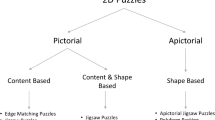Abstract
Physical strands or sheets that can be modelled as curves or surfaces embedded in three dimensions are ubiquitous in nature, and are of fundamental importance in mathematics, physics, biology, and engineering. Often the physical interpretation dictates that self-avoidance should be enforced in the continuum model, i.e., finite energy configurations should not self-intersect. Current continuum models with self-avoidance frequently employ pairwise repulsive potentials, which are of necessity singular. Moreover the potentials do not have an intrinsic length scale appropriate for modelling the finite thickness of the physical systems. Here we develop a framework for modelling self-avoiding strands and sheets which avoids singularities, and which provides a way to introduce a thickness length scale. In our approach pairwise interaction potentials are replaced by many-body potentials involving three or more points, and the radii of certain associated circles or spheres. Self-interaction energies based on these many-body potentials can be used to describe the statistical mechanics of self-interacting strands and sheets of finite thickness.
Similar content being viewed by others
REFERENCES
H. Yamakawa, Modern Theory of Polymer Solutions (Harper and Row, New York, 1971).
P. G. de Gennes, Scaling Concepts in Polymer Physics (Cornell University Press, Ithaca, 1979).
M. Doi and S. F. Edwards, The Theory of Polymer Dynamics (Clarendon Press, New York, 1993).
G. des Cloiseaux and J. F. Jannink, Polymers in Solution: Their Modeling and Structure (Clarendon Press, Oxford, 1990).
D. R. Nelson, T. Piran, and S. Weinberg, eds., Statistical Mechanics of Membranes and Surfaces, Vol. 5 (Jerusalem Winter School for Theoretical Physics, World Scientific, Singapore, 1989).
K. J. Wiese, Polymerized membranes: A review, in Phase Transitions and Critical Phenomena, Vol. 19, C. Domb and J. L. Lebowitz, eds. (Academic Press, New York, 2000).
K. G. Wilson and M. E. Fisher, Critical exponents in 3.99 dimensions, Phys. Rev. Lett. 28:240-243 (1972).
J. Zinn-Justin, Quantum Field Theory and Critical Phenomena (Clarendon Press, New York, 1993).
L. P. Kadanoff, Critical behavior, universality and scaling in critical phenomena, in Proc. of the Int. School of Phys. “E. Fermi” (Varenna) Course LI, M. S. Green, ed. (Academic Press, New York, 1971).
H. E. Stanley, Scaling, universality and renormalization: three pillars of modern critical phenomena, Rev. Mod. Phys. 71:S358-S366 (1999).
J. Cantarella, R. Kusner, and J. M. Sullivan, On the minimum ropelength of knots and links, Inventiones Math, to appear.
O. Gonzalez and R. de la Llave, Existence of ideal knots, Journal of Knot Theory and its Ramifications, to appear.
O. Gonzalez, J. H. Maddocks, F. Schuricht, and H. von der Mosel, Global curvature and self-contact of nonlinearly elastic curves and rods, Calculus of Variations 14:29-68 (2002) (DOI 10.1007/s005260100089, April 2001).
F. Schuricht and H. von der Mosel, Global curvature for rectifiable loops, Mathematische Zeitschrift, to appear.
V. Katritch, J. Bednar, D. Michoud, R. G. Scharein, J. Dubochet, and A. Stasiak, Geometry and physics of knots, Nature 384:142-145 (1996).
O. Gonzalez and J. H. Maddocks, Global curvature, thickness and the ideal shapes of knots, Proc. Natl. Acad. Sci. USA 96:4769-4773 (1999).
A. Maritan, C. Micheletti, A. Trovato, and J. R. Banavar, Optimal shapes of compact strings, Nature 406:287-290 (2000).
O. Gonzalez, J. H. Maddocks, and J. Smutny, Curves, circles, and spheres, to appear in Contemporary Mathematics (American Mathematical Society, Providence, R.I., 2002).
A. Stasiak, V. Katritch, and L. H. Kauffman, eds., Ideal Knots (World Scientific Publishing, Singapore, 1998).
D. J. Struik, Lectures on Classical Differential Geometry, 2nd Edn. (Dover, New York, 1988).
K. J. Wiese and F. David, Self-avoiding tethered membranes at the tricritical point, Nucl. Phys. B 450:495-557 (1995).
A. Baumgärtner, Does a polymerized membrane crumple?, J. Phys. I France 1:1549-1556 (1991).
A. Baumgärtner and W. Renz, Crumpled self-avoiding tethered surfaces, Europhys. Lett. 17:381-386 (1992).
D. M. Kroll and G. Gompper, Floppy tethered networks, J. Phys. I France 3:1131(1993).
R. B. Kusner and J. M. Sullivan, Möbius invariant knot energies, in Ideal Knots, Chap. 17, A. Stasiak, V. Katritch, and L. H. Kauffman, eds. (World Scientific Publishing, Singapore, 1998).
C. Anfinsen, Principles that govern the folding of protein chains, Science 181:223-230 (1973).
C. Chothia, One thousand families for the molecular biologist, Nature 357:543-544 (1992).
J. R. Banavar, A. Maritan, C. Micheletti, and A. Trovato, Geometry and physics of proteins, Proteins 47:315-322 (2002) (DOI 10.1002/prot.10091).J. R. Banavar, A. Flammini, D. Marenduzzo, A. Maritan, and A. Trovato, Geometry of compact tubes and protein structures, ComPlexUs (in press).
G. N. Ramachandran and V. Sasisekharan, Conformations of polypeptides and proteins, Adv. Protein Chem. 23:283-438 (1968).
R. Srinivasan and G. D. Rose, LINUS-A hierarchical procedure to predict the fold of a protein, Proteins 22:81-99 (1995).
Author information
Authors and Affiliations
Rights and permissions
About this article
Cite this article
Banavar, J.R., Gonzalez, O., Maddocks, J.H. et al. Self-Interactions of Strands and Sheets. Journal of Statistical Physics 110, 35–50 (2003). https://doi.org/10.1023/A:1021010526495
Issue Date:
DOI: https://doi.org/10.1023/A:1021010526495




